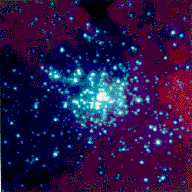
Course Syllabus
Autumn Quarter 2002

Course Syllabus
Autumn Quarter 2002
This course is an introduction to modern astronomical observation techniques and methods for interpreting observations, geared towards advanced astronomy and physics majors. Topics include an introduction to practical spherical astronomy, basic statistical treatment of data, and practical experience with astronomical instrumentation and data sources. Students will be given experience using telescopes and workstation computers for the acquisition, reduction, and analysis of astronomical data through laboratory exercises.
At the end of the course, the student will be expected to grasp the fundamentals of positional astronomy as it relates to basic observational practice, understand and be able to apply sensibly basic statistical techniques for the quantitative analysis of data, and will have been introduced to and given basic experience in the techniques they will encounter in optical and infrared astronomical research. This will provide the student with sufficient grounding in basic astronomical observing and data analysis techniques to be able to effectively participate in supervised research experiences with OSU astronomy faculty, for example, preparatory to a senior honors thesis in astronomy.
[Index]
The Final Exam is scheduled for Thursday, December 12 at 1:30-3:18pm in in 4045 McPherson Lab. The exam will be comprehensive, and closed-book, closed-notes, consisting of short problems.
[Index]
Homework will be assigned each week and due in-class the following week (days to be determined). Late homework assignments will not be accepted without good reason and/or advance arrangement with the instructor.
[Index]
About a third of the course work consists of laboratory exercises, divided among telescope observing projects to gather data (weather permitting), and analysis of data. All write-ups of lab work will be due at the end of the quarter. Attendance is mandatory at all lab sessions, except by prior arrangement. The first lab session is the first day of courses on Sept 25, and will be used as a general orientation session for the course, so attendance is required.
For the computer portions of the labs, students will be given temporary accounts on Astronomy Department lab workstations for the duration of the course. These are Linux workstations to be used for many of the image processing and analysis labs. Information on use of computers and local computer use policies will be handed out separately during the first Lab session. These computers are being located in the Astronomy Undergraduate Room in 4042 McPherson Lab, and may be used any time for course work, not just during the Wednesday-night labs.
[Index]
Lectures are twice weekly, Tuesday & Thursday at 11:30am until 12:48pm. The lectures are where the core material of the course will be presented, so attendance is mandatory. A list of topics to be covered is given below. Because there is no textbook for this course, but I will be handing out lecture notes roughly weekly.
[Index]
The Final Exam, Homeworks, and Lab Reports will all count equally (1/3 each) towards determining the ultimate course grade.
[Index]
Below is the list of topics for this course. The choice and pacing of topics in the two major units (statistical treatment of experimental data and astronomical data analysis) can slide as much as a week as required.
Copyright © 2002, Richard W. Pogge. All Rights Reserved.